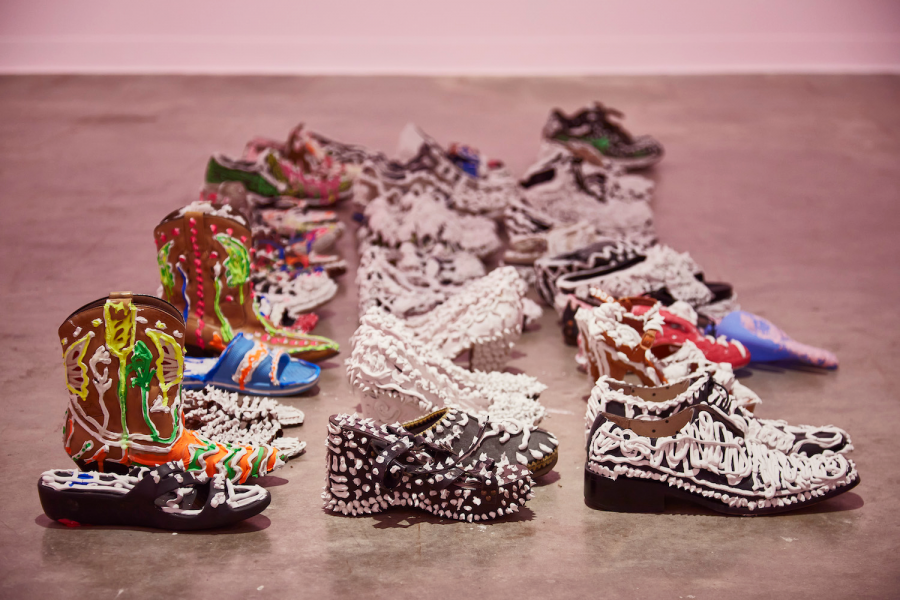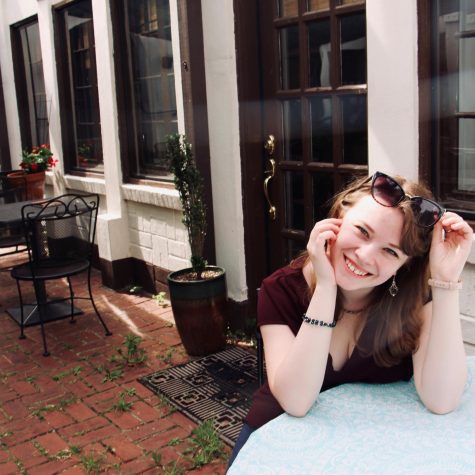Law Warschaw Gallery guest artist Yvette Mayorga discusses creating anti-monuments
Pieces from “Monuments of the Forgotten” by Yvette Mayorga. Photo courtesy of the Law Warschaw Gallery.
December 10, 2020
While the Law Warschaw Gallery remains closed this semester, it is still engaging with the Macalester community by showcasing the work of their fall 2020 guest artist Yvette Mayorga virtually on the gallery’s Instagram page and in a series of discussions on Zoom. On Tuesday, Dec. 8, the gallery hosted a conversation titled “A Spoonful of Sugar: Yvette Mayorga’s Anti-Monuments” with Mayorga and Robert Cozzolino, a curator at the Minneapolis Institute of Art. During this event, the pair discussed the roles of familiarity, immigration and anti-monuments in Mayorga’s recent work.
Mayorga, a multimedia installation artist, was originally set to have her exhibit “Monochromatic Dreams” on display at the Law Warschaw Gallery starting in October 2020. Because the physical gallery is closed in compliance with COVID-19 safety regulations, the exhibition has been postponed to September 2021. However, Mayorga is still engaging with the gallery this season in an online format.
Gallery Director and Curator of the Law Warschaw Gallery Jehra Patrick led the opening remarks before Mayorga and Cozzolino began their 45-minute discussion and answered questions from attendees. Large portions of the conversation focused on Mayorga’s ongoing installation project “Monuments of the Forgotten,” which she is working on in Chicago and incorporates donated shoes that are decorated with plaster, acrylic paste and frosting — all created using baking tools.
“They’re named ‘monuments of the forgotten,’ but I like to view them as an anti-monument because the work is attempting to monumentalize the amount of migrants who have crossed the US-Mexico border and lost their lives in doing so,” Mayorga said.
Shoes are items with significant personal meaning to their wearers and were chosen by Mayorga as the objects of interest because they are often found along the border. According to her, they can “serve as portraits of individuals.”
“I like that connection to the individual while creating a monument that is to unnamed migrants,” Mayorga said. “Although I may not know them personally or have names listed onto the shoes, I want that personalization to exist within the work.”
Even when the shoes are piped with plaster or acrylic paste, the sweet and nearly-edible aesthetic of having the material resemble frosting is an intentional part of Mayorga’s work. The title for the discussion “A Spoonful of Sugar” is a direct reference to this artistic choice.
“I think frosting or the appearance of something that’s edible is so familiar across generations, backgrounds, race, et cetera,” Mayorga said. “I wanted it to be this way of sort of bridging the gap between the imagery and the content of the work and have it be this first invitation where the audience wants to view the work because of the material and is naturally drawn to discover that the work is about a lot more than aesthetics and references of the edible.”
Mayorga draws a lot of inspiration for her work from historical art movements, especially the Rococo period of the 18th century, characterized by elaborate ornamentation.
“It just seems so fitting for me to reference a time in which there was so much happening politically and [yet] so much joy and leisure at the same time — sort of an ignoring of the political unrest at the time,” Mayorga said. “I think it’s really sort of foretelling of the moment we are living in now.”
The conversation went in a variety of directions once it opened up to audience questions. Mayorga explained how the influence of feminist art and her use of a mostly pink color palette was her way of reclaiming power in something that is often seen as “frivolous.” She also talked about how different it has been to work as an artist in a time where it is nearly impossible to hold in-person art exhibitions for people to visit. The last audience question brought the conversation back to its theme of (anti-) monuments.
“What should the monuments of the future do? Maybe there should not be any monuments, or maybe we need to rethink the way in which monuments make their way into society and history,” Mayorga said.
“Maybe there should be more of a vetting or communal committee decision of what monuments go up because I think the issue with the monuments that are present is that they’re only maybe telling one side of the history and not both.”
A recording of Tuesday’s conversation will be shared and made available on the Law Warschaw Gallery’s web and social media pages soon. More information about Mayorga’s work and creative process can be found on the gallery’s Instagram page.













